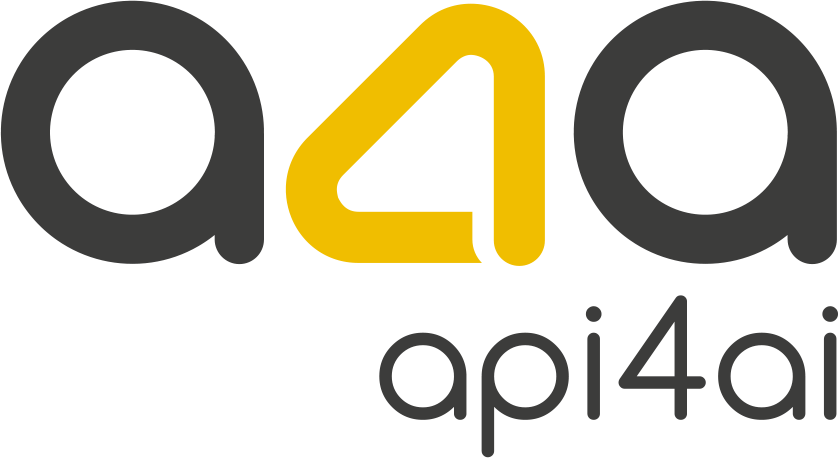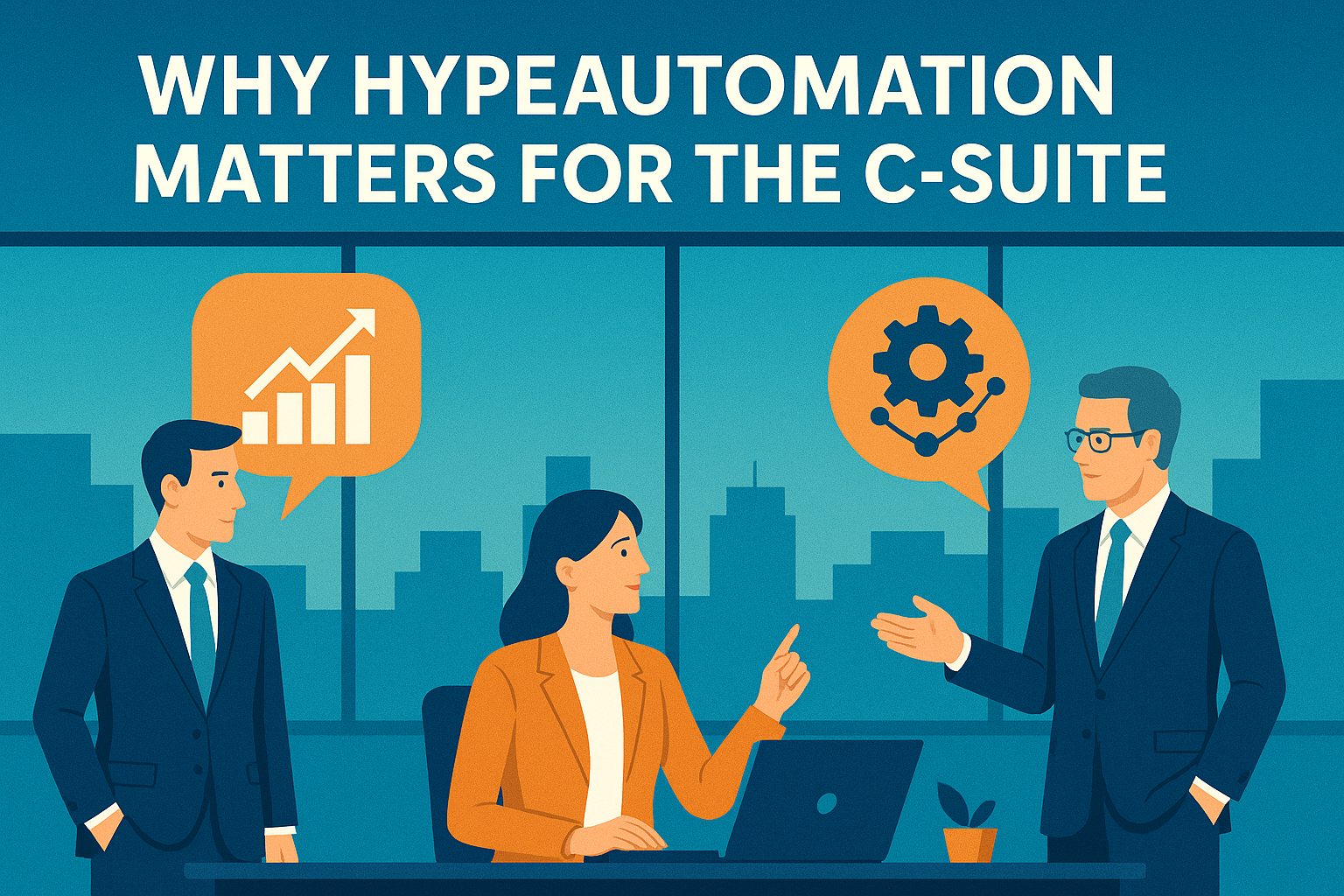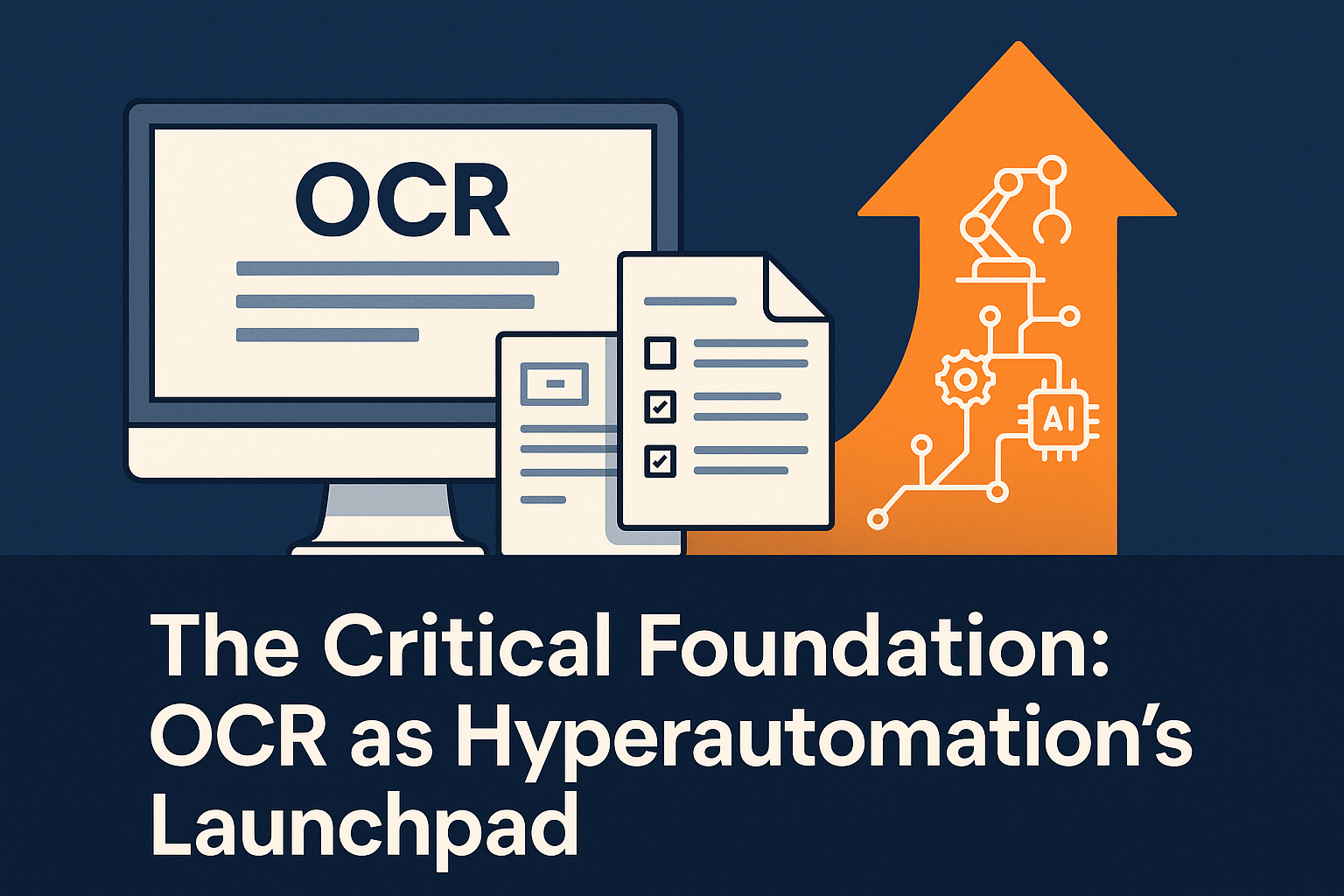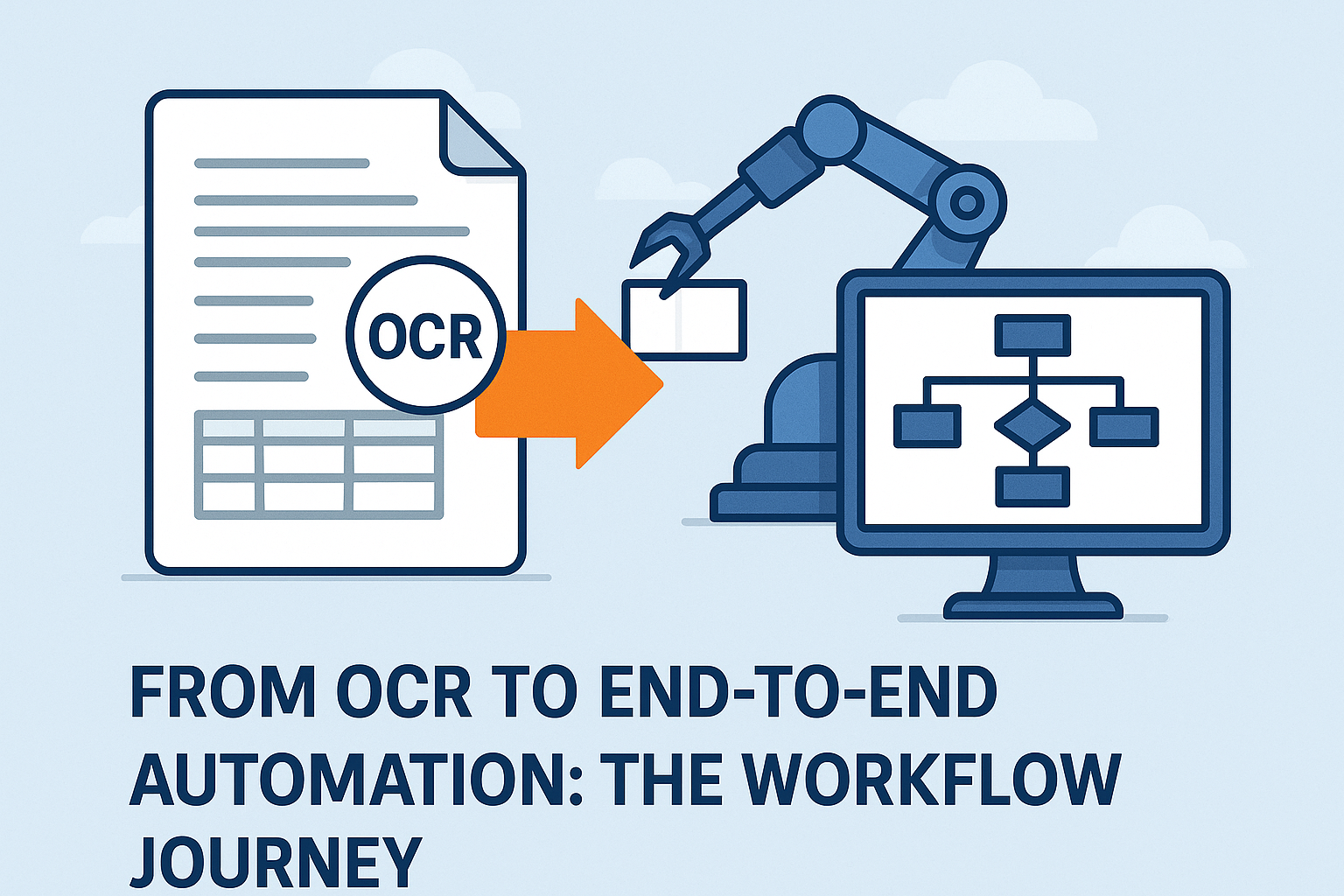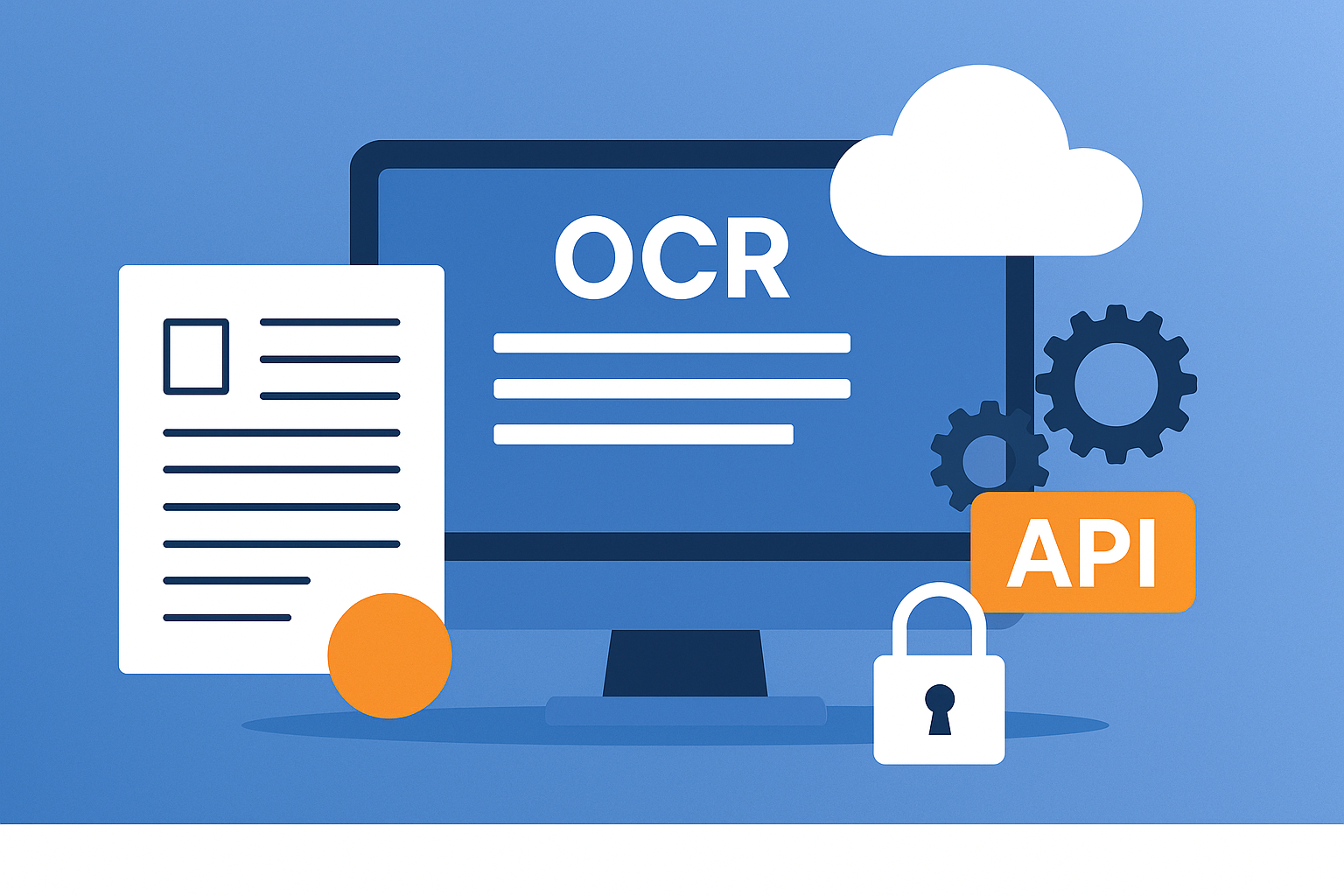Hyperautomation: OCR as the Starting Line
Introduction
In 2025, hyperautomation has moved from a technology buzzword to a central boardroom priority. Enterprises across industries are no longer asking if they should automate, but how far and how fast they can scale intelligent automation across their organizations. Analysts forecast that the hyperautomation market will continue its double-digit growth, reaching well into the tens of billions by the end of the decade. For executives, this isn’t just about adopting new tools — it’s about securing operational resilience, lowering costs, and keeping pace in a business environment where agility is the true competitive advantage.
At its core, hyperautomation is the convergence of AI, robotic process automation (RPA), and intelligent workflows. This integrated approach enables organizations to move beyond simple task automation to orchestrating end-to-end processes that adapt, learn, and improve over time. Yet, while the narrative often emphasizes advanced analytics, machine learning, or orchestration engines, one foundational enabler is often overlooked: Optical Character Recognition (OCR).
OCR is far more than a document-scanning utility. In today’s data-driven enterprise, it acts as the entry point for digital transformation. Every invoice, receipt, contract, or compliance form that still arrives in paper or semi-structured formats represents a bottleneck. Without accurate data extraction, automation pipelines stall before they even begin. By digitizing this content, OCR provides the structured data that fuels RPA bots, feeds AI models, and enables seamless integration with ERP, CRM, and financial systems.
For C-level leaders, the implications are direct and measurable. An investment in robust OCR capabilities doesn’t just reduce manual effort — it lays the groundwork for hyperautomation strategies that scale across the enterprise. Imagine an accounts payable workflow where invoices are captured by OCR, validated automatically, routed for approval without human intervention, and reconciled in real time with financial systems. That’s not a future vision — it’s already happening today in organizations that prioritize intelligent document processing as the first step toward hyperautomation.
This blog post will explore why OCR should be considered the starting line for hyperautomation initiatives, how it anchors intelligent workflows, and what best practices executives can adopt to ensure maximum return on investment. By the end, you’ll see that OCR is not a side note in automation — it’s the silent force that enables the enterprise to achieve faster, smarter, and more resilient operations in the hyperautomation era.
Why Hyperautomation Matters for the C-Suite
For executives, the promise of hyperautomation is not simply about faster processes — it is about reshaping the operating model of the enterprise. In a business environment where margins are under constant pressure, talent is scarce, and regulatory demands intensify each year, organizations cannot afford to rely on fragmented, manual, or error-prone workflows. Hyperautomation provides a scalable path to resilience by unifying artificial intelligence, robotic process automation (RPA), and intelligent workflows into a cohesive, continuously improving ecosystem.
A Strategic Imperative, Not a Technical Upgrade
Hyperautomation directly supports the top-line and bottom-line priorities of the C-suite. By eliminating repetitive manual tasks, companies can reduce operational costs by double-digit percentages while simultaneously increasing speed and accuracy. This efficiency dividend allows leaders to redirect resources toward innovation and growth. For CFOs, the appeal lies in measurable cost reductions and audit-ready compliance. For COOs, it means smoother, standardized processes across geographies. For CIOs and CTOs, it represents a strategic platform that can integrate with legacy systems while enabling future-proof transformation.
Human Capital Reimagined
One of the persistent misconceptions around automation is the fear of workforce displacement. The reality in 2025 is that hyperautomation augments human capital rather than replacing it. By taking over low-value, repetitive tasks, it frees skilled employees to focus on strategic initiatives, customer engagement, and creative problem-solving. This shift not only improves productivity but also boosts employee satisfaction and retention — critical concerns for CHROs navigating tight labor markets.
Building Enterprise Agility and Resilience
Executives today face continuous disruption: supply chain volatility, geopolitical uncertainty, and rapid shifts in customer expectations. Hyperautomation equips enterprises with the agility to adapt at scale. Processes that once required months to reengineer can now be adjusted dynamically through automation platforms powered by AI and RPA. Compliance frameworks can be updated automatically when regulations change. Customer service operations can flex instantly to meet demand spikes. In other words, hyperautomation transforms rigidity into resilience — an attribute that directly impacts shareholder confidence.
A Competitive Mandate
Perhaps most importantly, hyperautomation is not optional. Market leaders across finance, healthcare, logistics, and retail are already scaling intelligent automation. Falling behind in this race means more than operational inefficiency — it risks losing market relevance. Competitors that leverage OCR-enabled document processing, AI-driven decisioning, and RPA-orchestrated workflows will not only operate more efficiently but also deliver superior customer experiences. For the C-suite, the choice is clear: invest in hyperautomation now, or risk ceding competitive ground to those who do.
The Critical Foundation: OCR as Hyperautomation’s Launchpad
Every automation strategy begins with data. Yet, in most enterprises, a significant share of business-critical information still lives in unstructured formats: invoices sent as PDFs, receipts uploaded as images, contracts scanned as documents, and compliance records archived as paper. Without a reliable way to extract this information, even the most advanced automation initiatives stall. This is where Optical Character Recognition (OCR) becomes indispensable.
The Underestimated Enabler
While AI, RPA, and workflow orchestration often steal the spotlight, OCR is the quiet enabler that fuels them. By converting unstructured text locked in images or scanned documents into machine-readable data, OCR lays the groundwork for automation pipelines. Once digitized, this data can flow into RPA bots, trigger AI-driven validation, and feed into ERP, CRM, or financial systems without human intervention.
For example, consider an accounts payable process:
Without OCR, staff must manually read and key in invoice data, consuming hours and introducing errors.
With OCR, the data is captured instantly, validated by AI models, and routed by RPA for approval and payment.
The difference is not incremental — it is transformational.
Beyond Simple Digitization
Modern OCR has advanced far beyond basic text recognition. Today’s cloud-based OCR solutions can handle complex layouts, multilingual documents, and even low-quality scans with remarkable accuracy. When paired with intelligent document processing (IDP) and machine learning, OCR can identify fields such as invoice numbers, vendor details, totals, or compliance identifiers — structured data that executives can trust to drive automation reliably.
This evolution positions OCR as more than a utility. It becomes the launchpad for hyperautomation, ensuring that the vast flows of unstructured data entering an enterprise every day are transformed into fuel for intelligent workflows.
A Strategic Lens for the C-Suite
For C-level leaders, the business case is straightforward. OCR does not just improve efficiency in back-office operations; it establishes a foundation for enterprise-wide transformation. Every department — from finance and procurement to HR and compliance — relies on documents. By deploying OCR at the entry point, executives create a scalable architecture that ensures all downstream automation efforts are powered by clean, accurate, and actionable data.
In essence, OCR is the starting line of hyperautomation. It bridges the analog and digital worlds, enabling enterprises to transform everyday documents into the lifeblood of intelligent workflows. Without this foundation, hyperautomation remains a strategy on paper rather than a reality in practice.
From OCR to End-to-End Automation: The Workflow Journey
OCR on its own is powerful, but its true impact emerges when it becomes the entry point to fully automated workflows. For executives, the value lies not only in capturing text but in orchestrating what happens next — transforming static data into dynamic processes that cut costs, accelerate cycle times, and minimize risk.
Step 1: Capture – Turning Unstructured Inputs into Digital Assets
The journey begins when documents enter the organization: invoices arriving by email, receipts uploaded via mobile apps, or contracts scanned for compliance review. OCR instantly extracts the text, no matter the format or quality, and converts it into machine-readable data. This step eliminates the bottleneck of manual entry and ensures that automation pipelines start with accurate, digital-first information.
Step 2: Structure – Organizing Data for Action
Raw text alone is not enough. Modern OCR, often enhanced with AI, structures the data into fields that align with enterprise systems: invoice numbers, payment amounts, vendor IDs, or contract terms. Errors are flagged and corrected, often through machine learning validation or cross-checking with existing databases. At this stage, information becomes actionable rather than just digitized.
Step 3: Automate – Orchestrating Intelligent Workflows
Once structured, the data flows seamlessly into RPA bots and intelligent workflow engines. In finance, bots can validate invoices against purchase orders, route them for approval, and schedule payments. In HR, onboarding documents can be automatically verified, logged, and forwarded for digital signature. In compliance, scanned forms can be categorized and stored in audit-ready repositories. These orchestrated steps transform what used to be disjointed, manual processes into end-to-end automation.
Step 4: Optimize – Driving Continuous Improvement
The final stage is optimization. By combining process mining, analytics, and AI, organizations can monitor workflows in real time, detect bottlenecks, and refine operations continuously. Executives gain visibility into metrics such as processing time, error rates, and compliance adherence. The result is a feedback loop of efficiency — processes don’t just run faster, they evolve smarter.
The ROI Narrative for Leaders
For the C-Suite, the story is compelling. What begins with OCR — capturing a simple invoice or receipt — scales into a workflow that:
Cuts manual processing costs by up to 70%.
Reduces error rates that could lead to compliance penalties.
Speeds up cycle times, unlocking working capital faster.
Provides auditable, transparent processes that build trust with regulators and stakeholders.
This workflow journey demonstrates why OCR is not merely a support tool but the strategic trigger for hyperautomation. It enables enterprises to move from isolated task automation to intelligent, end-to-end transformation — achieving efficiency gains today while laying the foundation for tomorrow’s adaptive, AI-driven enterprise.
Best Practices for Implementing OCR-Powered Hyperautomation
For many organizations, OCR is the first domino in a larger automation strategy. However, simply deploying OCR technology is not enough to realize its full potential. To turn OCR into a genuine hyperautomation accelerator, executives need to approach implementation thoughtfully, balancing immediate wins with long-term scalability.
Start with High-Value, High-Volume Use Cases
Not every process needs automation from day one. The best candidates are document-heavy, repetitive workflowswhere small efficiencies generate outsized returns. Accounts payable, expense management, insurance claims, and compliance reporting are prime examples. By targeting these areas first, leaders demonstrate quick wins, build confidence across the organization, and generate momentum for broader adoption.
Prioritize Accuracy and Reliability
Automation is only as strong as its weakest link. If OCR outputs are error-prone, downstream processes suffer — approvals stall, payments misfire, and compliance risks grow. To mitigate this, executives should seek modern OCR enhanced with AI and machine learning, capable of handling multi-language text, noisy images, and diverse document layouts. Investing in high-accuracy capture ensures that automation scales without introducing new inefficiencies.
Balance Agility with Strategy
Cloud-based OCR APIs provide the ability to deploy quickly, integrate with existing systems, and scale on demand. For organizations seeking speed, this agility is invaluable. At the same time, executives should maintain a strategic roadmap for custom development where needed — especially in industries with unique document formats or stringent compliance requirements. A hybrid model allows companies to benefit from both rapid deployment and tailored, long-term solutions.
Embed Governance and Security from Day One
As automation spreads across departments, the risk of fragmented governance grows. C-suites must ensure that data privacy, compliance, and oversight are baked into every step. This means aligning with regulations such as GDPR or HIPAA, implementing audit trails, and ensuring secure handling of sensitive documents. Establishing governance early not only reduces risk but also builds organizational trust in automation.
Drive Adoption Through Change Management
Even the most advanced OCR and automation stack can underdeliver if people resist change. Executives should focus on change management as a strategic priority — engaging stakeholders early, communicating benefits clearly, and investing in training. Building a culture that views automation as augmentation rather than replacement is critical to scaling success. Many organizations establish a Center of Excellence (CoE) to centralize knowledge, best practices, and standards across business units.
Think Beyond Today’s Use Case
Finally, leaders should view OCR not as a one-off project but as a foundation for enterprise-wide transformation. Today it may streamline invoice processing; tomorrow it can power compliance monitoring, HR onboarding, or customer onboarding workflows. By treating OCR as the gateway to hyperautomation, executives position their organizations to adapt continuously, expand intelligently, and capture competitive advantage over time.
Seizing Opportunity with Modern API-First OCR Solutions
The path from vision to value in hyperautomation is often determined by how quickly and effectively organizations can operationalize new capabilities. This is where API-first OCR solutions deliver a decisive advantage. By providing ready-to-use, cloud-based building blocks, they allow enterprises to implement automation at speed, scale reliably, and adapt as business needs evolve.
Accelerating Time-to-Value
Traditional automation initiatives can take months — or even years — to design, build, and integrate. In contrast, modern OCR APIs can be connected to existing systems in days, with minimal infrastructure overhead. For executives, this means rapid proof-of-concepts, faster ROI, and the ability to test automation strategies without committing to long development cycles. A single pilot — such as automating invoice capture — can demonstrate measurable savings and operational gains within weeks.
Enabling Scalable, Flexible Workflows
Enterprises are no longer static; they evolve continuously to meet shifting customer expectations, regulatory updates, and competitive pressures. API-driven OCR is inherently scalable. Workloads can expand to handle seasonal peaks, new document types, or global operations without the need for heavy internal investment. This elasticity allows executives to align automation with business cycles rather than technology constraints.
Building Richer Automation Pipelines
OCR rarely operates in isolation. Once documents are digitized, organizations often require additional intelligence — such as anonymizing personal information for compliance, detecting objects for inventory tracking, or recognizing logos for brand monitoring. Modern API ecosystems extend OCR into broader AI-powered workflows, enabling enterprises to layer capabilities like background removal, object detection, or image labeling into end-to-end processes. This modularity empowers executives to scale automation horizontally across multiple business domains.
Balancing Standardization with Customization
While APIs offer immediate value through plug-and-play integration, many enterprises eventually face requirements unique to their industry or compliance landscape. Here, a hybrid approach works best: leverage off-the-shelf OCR APIs for speed, and complement them with custom AI solutions tailored to strategic needs. Though custom development requires investment, the long-term benefits — reduced operational costs, higher margins, and sustainable competitive advantage — are substantial. Executives who combine short-term agility with long-term vision position their organizations for lasting success.
A Strategic Lever for the C-Suite
API-first OCR is more than a technology choice; it is a strategic lever. It enables CFOs to unlock immediate efficiency gains, CIOs to modernize without disrupting legacy systems, and CEOs to pursue digital transformation agendas with confidence. By embedding API-based OCR into the hyperautomation roadmap, leaders ensure their organizations remain agile, compliant, and competitive in a world where speed and intelligence define market leadership.
Conclusion
Hyperautomation is no longer a future ambition — it is the defining enterprise trend of 2025. For executives, the strategic question is not whether to automate, but how to implement it in a way that delivers measurable value, scales across departments, and strengthens resilience in an unpredictable market. The journey begins not with advanced orchestration or machine learning, but with a deceptively simple step: capturing and structuring information through OCR.
OCR acts as the gateway to hyperautomation. By transforming invoices, receipts, forms, and contracts into accurate, machine-readable data, it enables RPA bots, AI models, and workflow engines to operate at full potential. Without OCR, automation pipelines remain starved of the very fuel they need to deliver results. With it, organizations unlock faster cycle times, reduced operational costs, and audit-ready compliance — outcomes that resonate directly with C-suite priorities.
The lessons are clear:
Efficiency gains are immediate. Automating document-heavy processes with OCR reduces errors and eliminates costly manual work.
Scalability is built-in. API-first OCR solutions integrate seamlessly into existing systems and expand with enterprise needs.
Strategic advantage compounds. Once OCR is embedded, enterprises can extend automation into broader workflows, from HR onboarding to customer onboarding, compliance monitoring, or brand intelligence.
For executives, adopting OCR is not merely a technology upgrade — it is a strategic commitment to building the intelligent enterprise. Quick pilots with cloud OCR APIs demonstrate value rapidly, while thoughtful long-term investments in tailored solutions ensure sustainable advantage. Leaders who act now will not only streamline current operations but also establish a foundation for continuous innovation in the decade ahead.
Hyperautomation may represent the future of enterprise automation, but its starting line is already here. And it begins with OCR.
